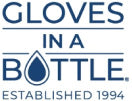
What is Eczema?
Share
Eczema is a very common, non-contagious, skin condition that affects approximately 10% of all children (https://nationaleczema.org/eczema-awareness-month/). It is an inflammatory skin disease where the skin becomes red, dry, itchy or scaly and may even weep, bleed or crust over. It can be infected by bacteria or viruses. The word eczema comes from a Greek word that means to effervesce or bubble or boil over.
Common types of Eczema
Atopic eczema
This is the most common type of eczema. It affects mainly children but can continue into adulthood. It can run in families and occurs along side other atopic conditions including asthma and hay fever. Other names include atopic dermatitis and atopic eczema.
Can atopic eczema be cured?
No, it cannot be cured, but there are many ways of controlling it. Most children with atopic eczema improve as they get older (60% clear by their teens). However, many continue to have dry skin and need to continue to manage the condition.
Contact Dermatitis
Contact eczema (contact dermatitis) is a localized reaction that includes redness, itching, and burning where the skin has come into contact with an allergen or an irritant. This includes reactions to washing powder and liquids, nickel (found in jewelery) cosmetics, fabrics, clothing, and perfume.
It is sometimes referred to as allergic contact eczema or allergic contact dermatitis. People who have a history of allergies have an increased risk of developing contact eczema.
A person who had atopic eczema as a child is at an increased risk of developing contact eczema.
Occupations at greatest risk of developing contact eczema include chefs, hairdressers, metal workers, nurses, cleaners and construction workers.
What should you do next? Find out about treatment.
If you think that you may have contact eczema (contact dermatitis), keep a diary and note when flare ups occur. You may find a pattern emerging when you wear a certain piece of jewelery, or when you use a cleaning product, perfume, soap etc. We suggest that you discuss your findings with your doctor.
Seborrhoeic dermatitis
Seborrhoeic eczema (seborrhoeic dermatitis) is a form of skin inflammation of unknown cause.
The signs and symptoms of seborrhoeic eczema include yellowish, oily, scaly patches of skin on the scalp, face, and occasionally other parts of the body. Dandruff and “cradle cap” in infants are examples of seborrhoeic eczema.
Seborrhoeic dermatitis is not necessarily associated with itching. This condition tends to run in families.
What to do if you have Eczema
If you suspect that you have eczema, the first thing you should do is consult with a dermatologist, who will develop a treatment plan for you, depending on the type and severity of your condition. Many individuals who suffer from eczema have found tremendous relief from Gloves In A Bottle, a shielding lotion that helps keep the skin moisturized and protected against skin irritants and allergens. Talk with your doctor about using Gloves In A Bottle along with your regular treatment plan.
